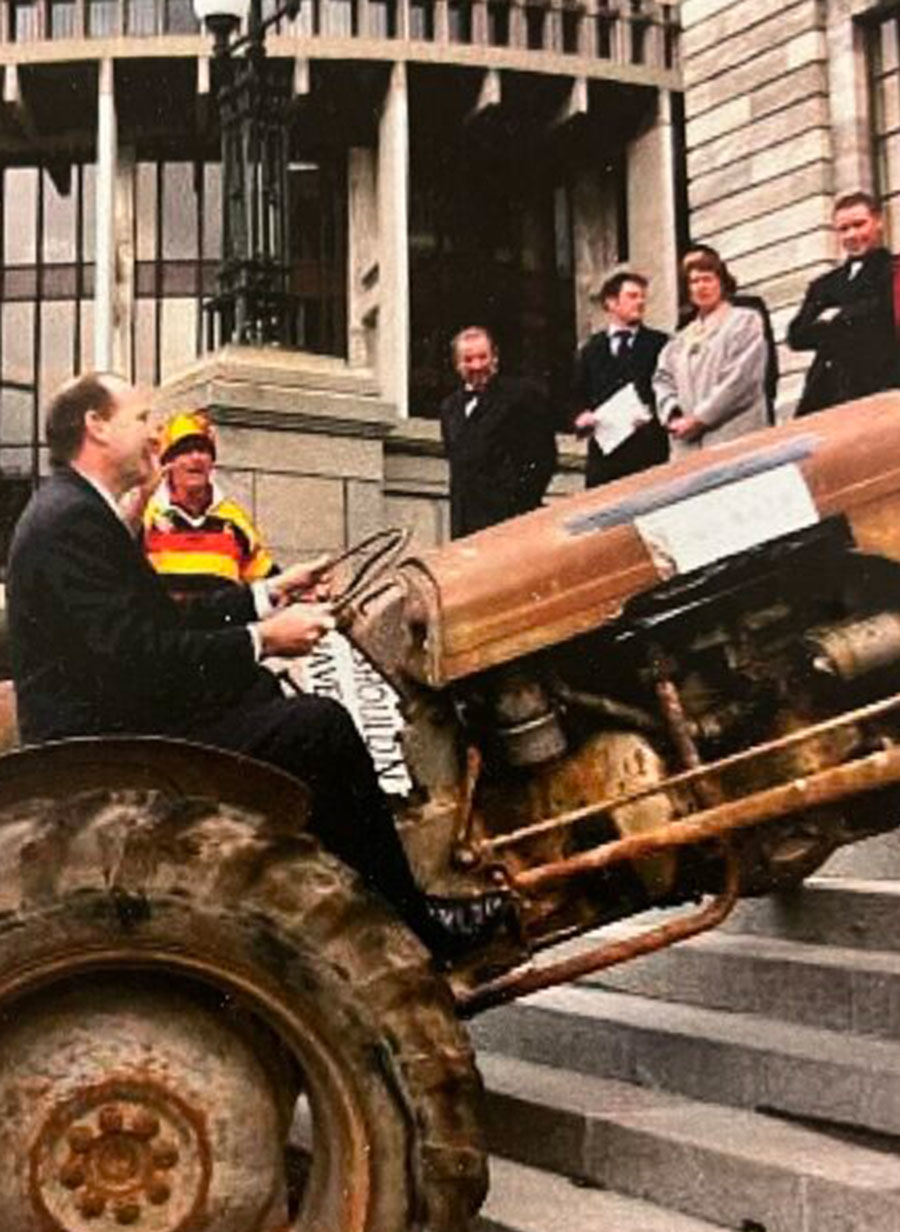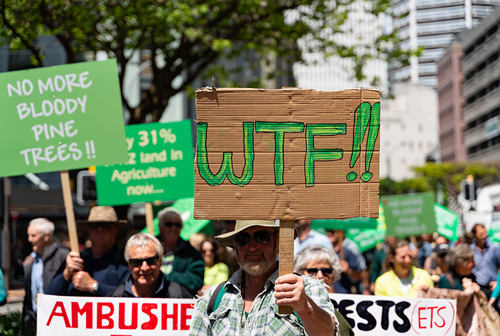

Smoke & Mirrors: What’s gone wrong with the ETS?
The emissions trading scheme is meant to be the country’s main tool for reducing our emissions, but critics say it’s doing little more than carpeting the country in permanent pine forest. Meanwhile, the price of carbon credits has gone from boom to bust. What’s gone wrong?
By George Driver
At 9am on September 4, an online auction began. On offer was a product that should lure the most powerful companies in the country. It was selling neither super yachts or Monets, but the right to put 7.6 million tonnes of carbon dioxide into the air. This should be a scarce commodity in hot demand. Every time someone in New Zealand burns fossil fuels, at some point in the supply chain a company has bought a carbon credit to account for it — a permit that allows the owner to emit a tonne of CO2. The government sells a fixed number of these permits, otherwise known as carbon credits, at auctions four times a year and the number is set to plummet in line with our climate change targets. In theory, this should reduce our emissions. It’s proven a lucrative product, too. Since this latest iteration of the scheme was launched in 2021, it’s delivered $3.5 billion into the government’s coffers. Two years ago, a single auction netted the Crown $736 million.
However, over the last 21 months, demand for these government-issued carbon credits has been near zero. When it held a carbon auction this past June, for the first time no one showed up to bid. When the last auction was held in September, no one even registered to attend.
The price of carbon credits, meanwhile, is meant to provide a clear price signal to emitters: if you fail to reduce their pollution, you’ll face ever increasing costs. Over the last three years, however, the price of carbon has been boom and bust. It nearly trebled from $35 to $90 in 2021/2022, before crashing back down to $37 last year. The volatility has continued since.
Issues with the scheme are not new. In the 2010s, prices collapsed to just 15 cents. Quirks in the scheme have resulted in some of the country’s biggest polluters making windfall profits. It once provided incentives for people to cut trees down, rather than plant them. It’s even resulted in millions of dollars being funnelled to suspected organised crime groups in Russia and Ukraine.
How did we get here and where did it go wrong?
The Price of Pollution
In 1989, economist Geoff Bertram got a call. An official from the recently-formed Ministry for the Environment rang the Victoria University lecturer for advice on how the country could reduce its greenhouse gas emissions.
Climate change policy was in its infancy and countries around the world were about to meet in Geneva to discuss how to wean the globe of fossil fuels.
The world had just successfully agreed to regulate another dangerous pollutant, chlorofluorocarbons (CFCs), a chemical used in fridges and spray-on deodorant that also happened to destroy the ozone layer on which all life depends. How much harder could phasing out fossil fuels be? Bertram’s answer to the ministry official was immediate. “You want a cap-and-trade arrangement.”
A cap-and-trade scheme, or emissions trading scheme (ETS), attempts to turn the right to pollute into a tradable commodity. Its beauty lies in the fact that it places both a price and a limit on pollution. The idea is to have a limited — “capped” — number of permits that allow the owner to discharge a specific amount of pollution. When that pollution is created, the polluter must submit permits to the government to account for that volume.
The government can sell these permits and reduce the number available each year. With fewer permits, there should be less pollution. The falling supply, meanwhile, should push up the price of polluting, incentivising behaviour change. Products that create more pollution become more expensive; products that produce little or no pollution become relatively cheap.
The idea of cap-and-trade schemes had been around since the 1960s, but Bertram was one of the first to see the potential of the concept to control global fossil fuel emissions.
“Back in those days, New Zealand was half serious and it looked manageable,” Bertram recalls. Then politicians got involved.
The Politics of Pollution
The concept of pricing pollution was soon picked up by the National Party’s then-environment minister, Simon Upton. The party was elected in 1990 and Bertram says Upton began working towards implementing a low level carbon tax.
A carbon tax still puts a price on emissions, but it is fundamentally different to an emissions trading scheme. Unlike an ETS, a tax doesn’t put a cap on the amount of pollution, but it gives the government control over the price of polluting, which can be ramped up over time. This avoids the complexity of a carbon market, where the price is always uncertain, but it doesn’t put a hard limit on the amount of pollution permitted.

For Bertram, a tax was preferable to an ETS domestically because New Zealand is too small to allow the market to function properly. A few big emitters could dominate the market. It was all going well until Upton got to cabinet, Bertram recalls. “Of course it was a National Party redneck neoliberal cabinet for the most part, and as soon as he mentioned a carbon tax there were screams of outrage. A huge lobby of invested interests and big business came down on the government and said you can’t put in a carbon tax.”
Nonetheless, by 1994 the National government set a target of reducing carbon emissions back to 1990 levels by 2000 — the country’s first climate change target. To achieve this it proposed implementing either a carbon tax or an emissions trading scheme within three years. This time was meant to give the country’s major polluters time to develop a voluntary alternative scheme. However, as Upton told North & South in 2021, “Those things rarely work”. “People use the time to lobby.”
When the 1997 deadline finally arrived the government delayed making a decision for a year until a new international agreement, the Kyoto Protocol, was finalised. Further rounds of consultation followed, 1998 passed by, and as campaigning began for the 1999 election, the government announced it would delay making a decision until after yet another climate conference. As the decade came to an end, rather than decline, the country’s net emissions had increased by 17 per cent.
In 1999, National lost the election and the Labour-Alliance coalition came to power with no apparent plan on how to price carbon. It adopted a new target to reduce emissions back to 1990 levels by 2008 and announced both a carbon tax and an ETS were “under examination”.
It took three years before it consulted on a carbon tax, priced at $25 per tonne of CO2. The tax would be revenue-neutral, meaning the money raised would be put back into tax cuts, but wouldn’t be introduced until 2007 at the earliest.
The following year, it also began consulting on a levy on agriculture to fund research into reducing ag emissions. It equated would cost the average farm $300 a year — about 9 cents per sheep and 54-72 cents per cow. Farmers, however, labelled it a fart tax and the outcry culminated in National MP Shane Ardern driving a vintage Ferguson tractor named Myrtle up the steps in parliament. The government caved within months.
